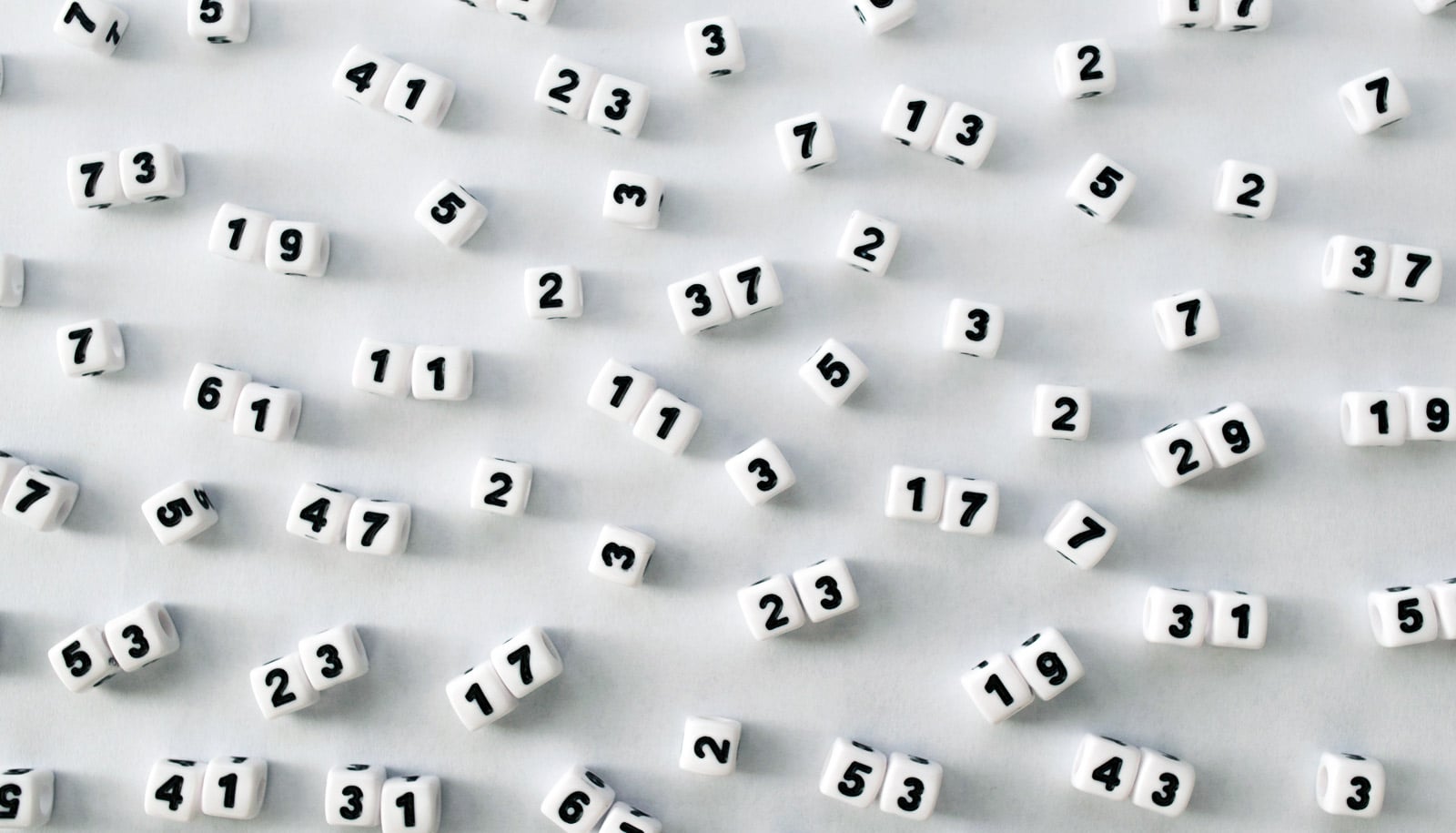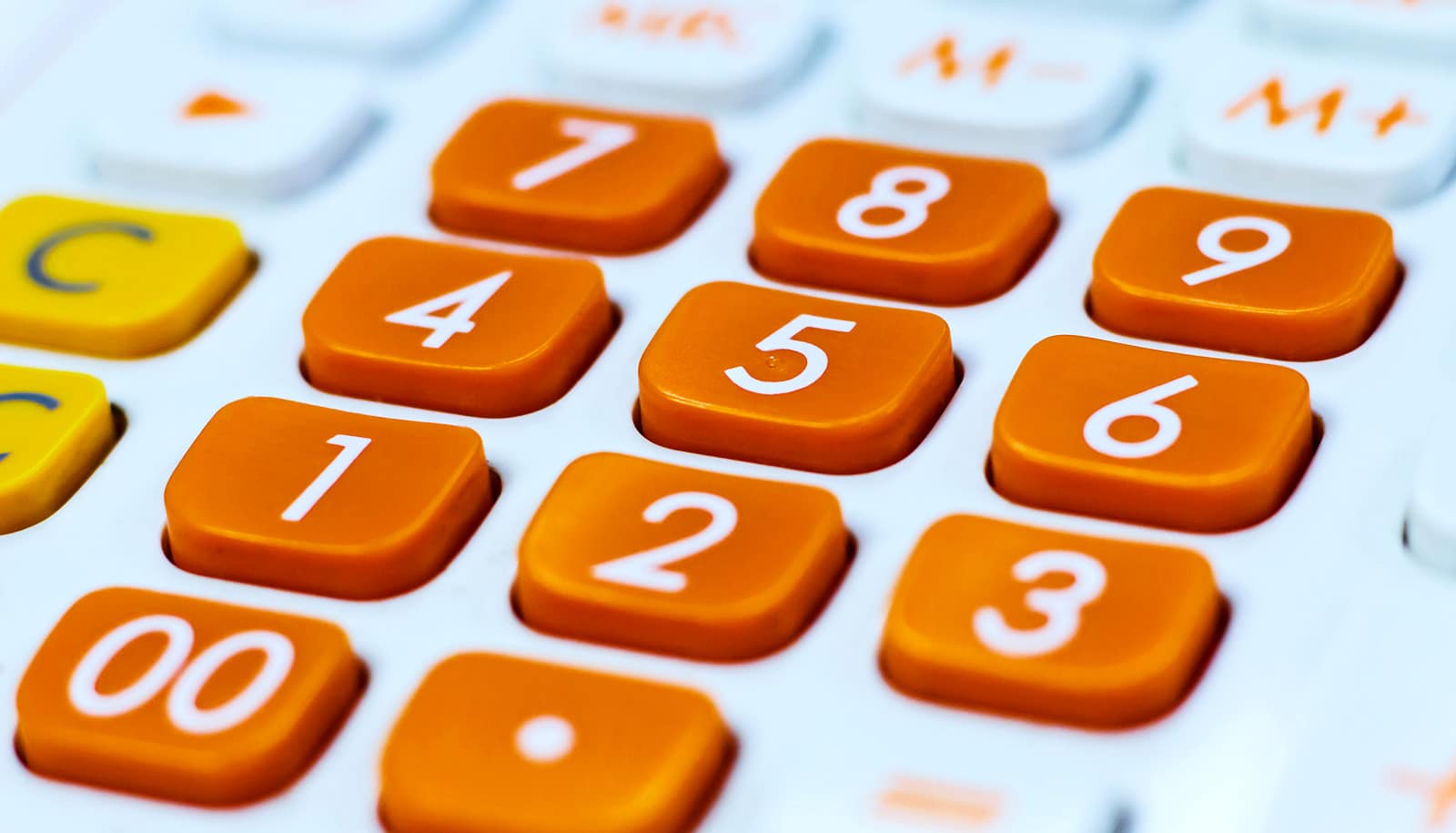A new paper suggests that one of the many proposed solutions to the most famous open problem in mathematics—the Riemann Hypothesis—is unexpectedly practical.
“In a surprisingly short proof, we’ve shown that an old, abandoned approach to the Riemann Hypothesis should not have been forgotten,” says Ken Ono, a number theorist at Emory University and coauthor of the paper in PNAS. A commentary on the work by Fields Medalist Enrico Bombiero also appears in the journal.
“By simply formulating a proper framework for an old approach we’ve proven some new theorems, including a large chunk of a criterion which implies the Riemann Hypothesis. And our general framework also opens approaches to other basic unanswered questions.”
The paper builds on the work of Johan Jensen and George Pólya, two of the most important mathematicians of the 20th century. It reveals a method to calculate the Jensen-Pólya polynomials—a formulation of the Riemann Hypothesis—not one at a time, but all at once.
“Math at a research level is often more art than calculation…”
“The beauty of our proof is its simplicity,” Ono says. “We don’t invent any new techniques or use any new objects in math, but we provide a new view of the Riemann Hypothesis. Any reasonably advanced mathematician can check our proof. It doesn’t take an expert in number theory.”
Although the paper falls short of proving the Riemann Hypothesis, its consequences include previously open assertions which are known to follow from the Riemann Hypothesis, as well as some proofs of conjectures in other fields.
“The result established here may be viewed as offering further evidence toward the Riemann Hypothesis, and in any case, it is a beautiful stand-alone theorem,” says Kannan Soundararajan, a mathematician at Stanford University and an expert on the Riemann Hypothesis.
A ‘toy problem’
The idea for the paper was sparked two years ago by a “toy problem” that Ono presented as a “gift” to entertain Don Zagier of the Max Planck Institute of Mathematics during the lead-up to a math conference celebrating his 65th birthday.
The Riemann Hypothesis carries a $1 million prize.
A toy problem is a scaled-down version of a bigger, more complicated problem that mathematicians are trying to solve. Zagier described the one that Ono gave him as “a cute problem about the asymptotic behavior of certain polynomials involving Euler’s partition function, which is an old love of mine and of Ken’s—and of about pretty much any classical number theorist.”
“I found the problem intractable and I didn’t really expect Don to get anywhere with it,” Ono recalls. “But he thought the challenge was super fun and soon he had crafted a solution.”
Ono’s hunch was that such a solution could be crafted into a more general theory. That’s what the mathematicians ultimately achieved.
“It’s been a fun project to work on, a really creative process,” says coauthor Michael Griffin, an Emory grad now on the faculty at Brigham Young University. “Math at a research level is often more art than calculation and that was certainly the case here. It required us to look at an almost 100-year-old idea of Jensen and Pólya in a new way.”
The Riemann Hypothesis is one of seven Millennium Prize Problems, which the Clay Mathematics Institute identified as the most important open problems in mathematics. Each problem carries a $1 million bounty for its solvers.
The method outlined in the PNAS paper “has a shocking sense of being universal, in that it applies to problems that are seemingly unrelated,” says coauthor Larry Rolen, an Emory grad now on the faculty at Vanderbilt University.
Riemann and prime numbers
The hypothesis debuted in an 1859 paper by German mathematician Bernhard Riemann. He noticed that the distribution of prime numbers is closely related to the zeros of an analytical function, which came to be called the Riemann zeta function. In mathematical terms, the Riemann Hypothesis is the assertion that all of the nontrivial zeros of the Zeta function have real part ½.
“His hypothesis is a mouthful, but Riemann’s motivation was simple,” Ono says. “He wanted to count prime numbers.”
The hypothesis is a vehicle to understand one of the greatest mysteries in number theory—the pattern underlying prime numbers. Although prime numbers are simple objects defined in elementary math (any number greater than 1 with no positive divisors other than 1 and itself) their distribution remains hidden.
The first prime number, 2, is the only even one. The next prime number is 3, but primes do not follow a pattern of every third number. The next is 5, then 7, then 11. As you keep counting upwards, prime numbers rapidly become less frequent.
“It’s well known that there are infinitely many prime numbers, but they become rare, even by the time you get to the 100s,” Ono explains. “In fact, out of the first 100,000 numbers, only 9,592 are prime numbers, or roughly 9.5 percent. And they rapidly become rarer from there. The probability of picking a number at random and having it be prime is zero. It almost never happens.”
Combining polynomials
In 1927, Jensen and Pólya formulated a criterion for confirming the Riemann Hypothesis, as a step toward unleashing its potential to elucidate the primes and other mathematical mysteries. The problem with the criterion—establishing the hyperbolicity of the Jensen-Pólya polynomials—is that it is infinite. During the past 90 years, only a handful of the polynomials in the sequence have been verified, causing mathematicians to abandon this approach as too slow and unwieldy.
For the PNAS paper, the authors devised a conceptual framework that combines the polynomials by degrees. This method enabled them to confirm the criterion for each degree 100 percent of the time, eclipsing the handful of cases that were previously known.
“The method has a shocking sense of being universal, in that it applies to problems that are seemingly unrelated,” Rolen says. “And at the same time, its proofs are easy to follow and understand. Some of the most beautiful insights in math are ones that took a long time to realize, but once you see them, they appear simple and clear.”
Despite their work, the results don’t rule out the possibility that the Riemann Hypothesis is false. The authors believe that a complete proof of the famous conjecture is still far off.
The National Science Foundation and the Asa Griggs Candler Fund supported the work.
Source: Emory University



